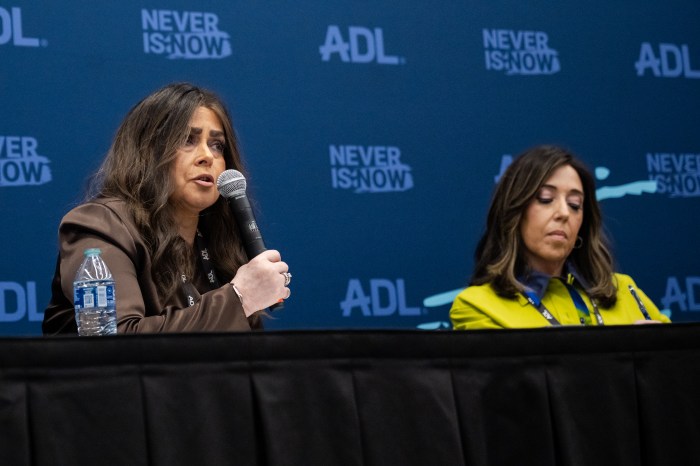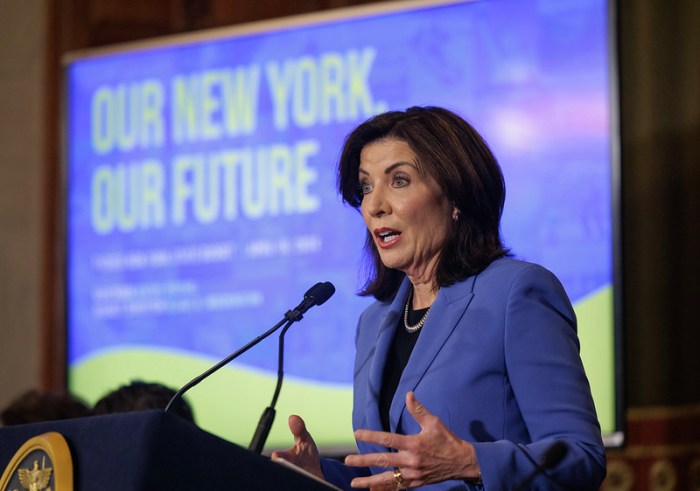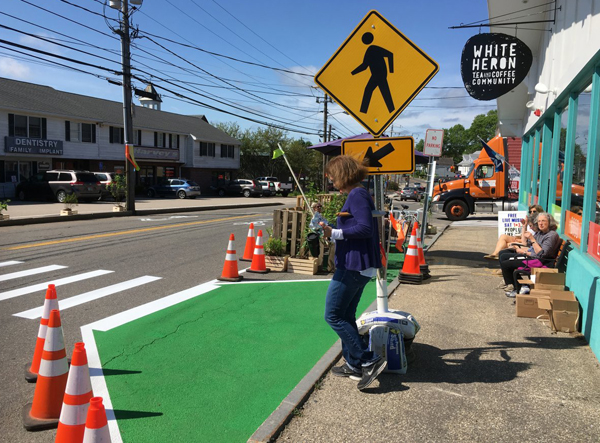
So-called “tactical urbanism” makes temporary changes to the streetscape — like this crosswalk-shortening “neckdown” — to show the public what effect permanent versions could have, with the aim of building grassroots support.
BY COLIN MIXSON
The horse-and-buggy era may be long past, but bales of hay could still play a big role in solving Downtown’s traffic problems.
Using hay bales and other props to temporarily redesign aspects of the streetscape is a key part of a novel approach to transit-reform advocacy called “tactical urbanism.” And earlier this month a band of Downtown residents met with reps from Transportation Alternatives to brainstorm ideas for using such techniques to demonstrate ways to improve the area’s Downtown’s twisted streetscape.
The idea is to demonstrate to the people who actually use the streets what effects certain changes could have, as a way to rally grassroots support for more permanent improvements, according to Trans-Alt’s tactical urbanism consultant and design guru Michael Lydon, who led the March 2 workshop.
“If we’re able to engage residents and businesses and there’s a positive response then what we’re doing is building a larger coalition of people to create lasting change in the neighborhood,” said Lydon, a principal at the Street Plans design firm.
Billed as a kind of guerrilla strategy for changing city infrastructure, tactical urbanism aims to turn the traditional model on its head.
Whereas most changes to the streetscape involve a long, bureaucratic process of traffic studies by the city’s Department of Transportation, a methodical design phase, and extensive community consultation culminating in pouring concrete, so-called tactical urbanism uses short-term street-activity permits to allow low-cost, temporary alterations to street-level infrastructure using, which offer locals a taste of how innovative traffic-calming measures and pedestrian amenities can improve neighborhoods.
Most of Lydon’s examples of Street Plans’s previous urban operations boiled down to using paint, tape, planters, or simply traffic cones to take over driving lanes, beautifying them with art and plants, and turning them over for pedestrian use for a few days or weeks. Other examples included using hay bails to create choke points at intersections to slow traffic and narrow crosswalks, or laying down temporary bike lanes where none existed.
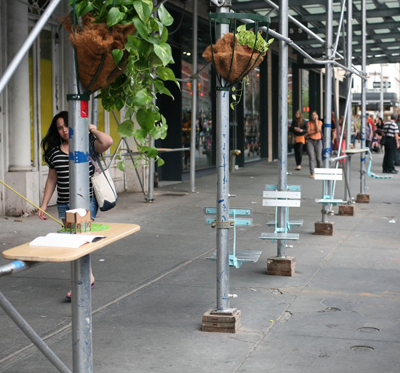
Manhattan “urban innovation” studio City Soft Walks has developed an array of detachable seats, counters, planters, and lights designed to latch onto sidewalk scaffolding to turn a blight into an amenity.
But the most popular suggestion at the workshop involved ways to turn Downtown’s plague of long-standing sidewalk scaffolding into actual amenities.
“The possibility of making parts of scaffolding into street seating was the most revolutionary idea,” said Trans-Alt’s Manhattan community organizer Chelsea Yamada.
Manhattan “urban innovation” studio City Soft Walks has developed an array of detachable seats, counters, planters, and lights designed to latch onto street-level scaffolding to create something more akin to a sidewalk café than the unsavory blight most sidewalk sheds have become.
“It turns one of the worst facets of Downtown streets into something exciting and usable,” Yamada said.
Financial District resident and Fidi Neighborhood Association board member Amanda Timchak suggested the nearly decade-old scaffolding at 15 Dutch St. as an ideal candidate for sprucing up.
“In our neighborhood, there’s these sidewalk sheds that go up and seemingly don’t ever come down, so finding ways to make them more appealing was a very attractive idea,” she said.
Trans-Alt plans on hosting several more workshops to solicit ideas for its tactical urbanism projects, before picking four of five that it hopes to implement — by securing street activity permits for the traffic alterations, or in the case of scaffolding transformations, establishing partnerships with property owners and construction contractors, Lydon said.
And once the tactical urbanism operations are up and running, Trans-Alt will seek to generate as much public interest in them and get as much feedback as possible, flagging down passersby to get their take on the changes in real time, in the hope of rallying support to lobby the city to make some changes permanent.
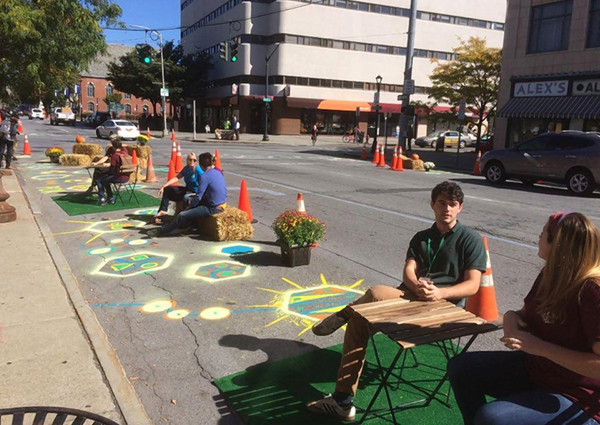
One common theme of tactical urbanist modifications is putting pedestrians and public amenities before traffic and parking.










